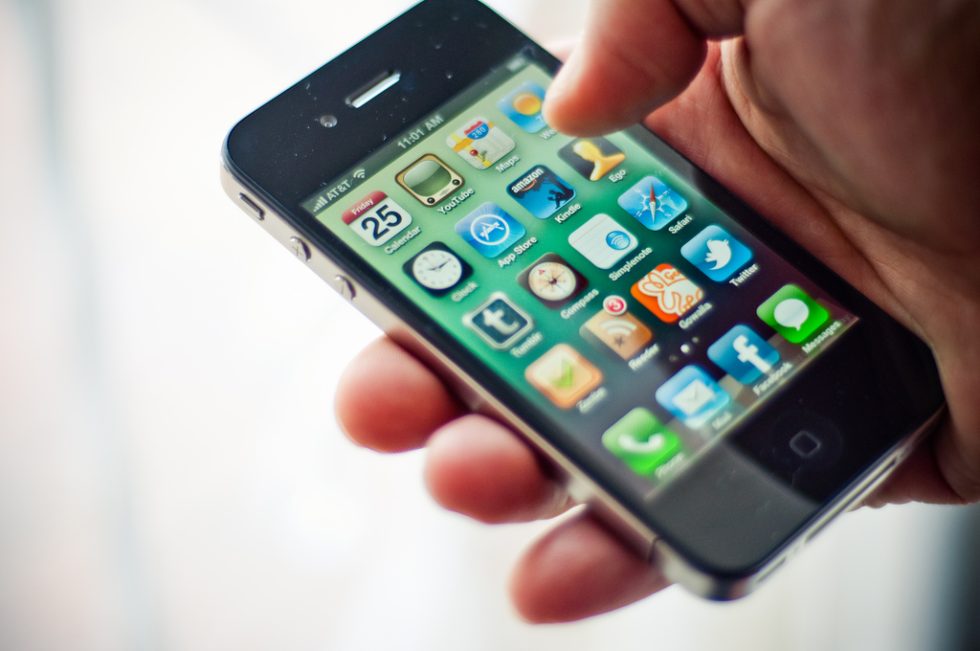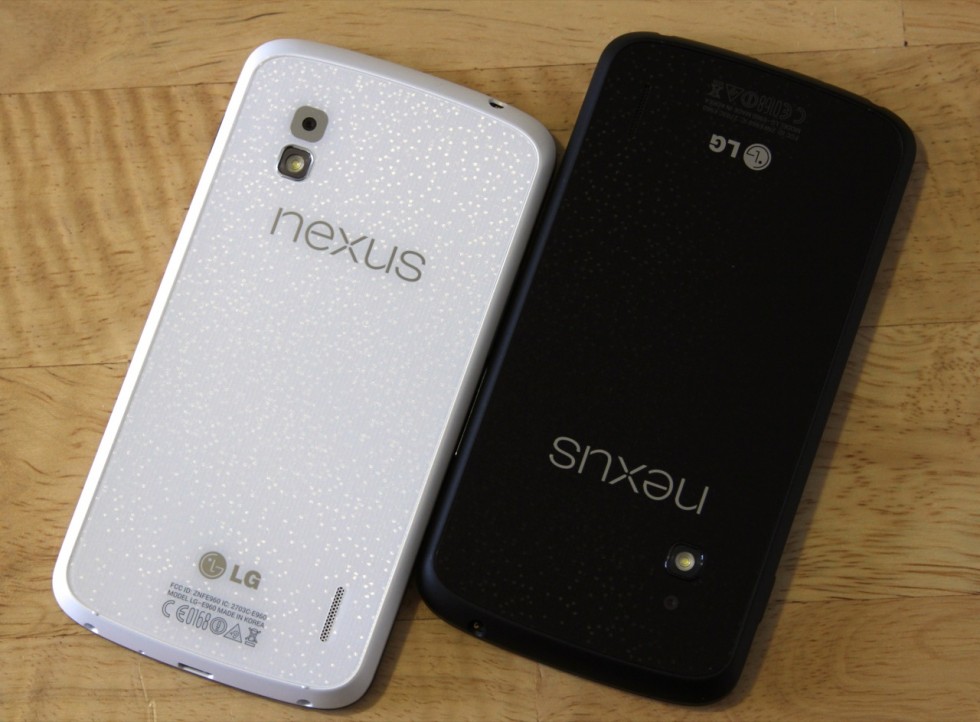
Smart security cameras are one of the easiest ways to start transforming your normal home into a connected home. Everyone knows about Alphabet's Nest cam, but there are plenty of other cameras to consider from companies including Samsung, D-Link, and Canary. However, you don't have to drop $200 on a bulbous eye-looking camera if you don't want to—there are apps for that. Numerous Android and iOS apps claim to use your old smartphone's cameras to replicate the features of these dedicated cams, letting you check in from your current smartphone whenever you want.
These security apps have nearly the same features as regular smart cameras but are free to download and require no extra hardware. Even older phones are powerful enough to be repurposed. That doesn't mean the apps are quite as good as purpose-built security cameras, though. We looked into the differences between home security cameras and their smartphone equivalents (specifically the apps Manything and Alfred) to see if one method of monitoring your home is better than the other.
| HOME SECURITY CAMERAS VS. APPS | ||||
|---|---|---|---|---|
| PRODUCT | Nest Cam | Canary Cam | Manything | Alfred |
| CAMERA RESOLUTION | 1080p | 1080p | depends on smartphone | depends on smartphone |
| FIELD OF VIEW | 130 degrees | 147 degrees | depends on smartphone | depends on smartphone |
| INTERNET | 2.4GHz, 5GHz Wi-Fi (802.11 b/g/n) | 2.4GHz Wi-Fi (802.11 b/g/n), connected Ethernet | smartphone Wi-Fi | smartphone Wi-Fi |
| LIVE STREAMING | Yes | Yes | Yes | Yes |
| NIGHT VISION | Yes | Yes | No | Yes |
| MOTION/SOUND DETECTION | Yes | Yes | Motion only | Motion only |
| MOBILE APP | Android and iOS | Android and iOS | Android and iOS | Android and iOS |
| SUBSCRIPTION | Nest Aware, $10 per month/$100 per year for 10 days' video, $30 per month/$300 per year for 30 days' video | Canary plans: $5, $10, and $30 per month plans | Cloud storage plans range from $2.99 to $19.99 per month depending on saved days and number of cameras | Free |
| PRICE | $199 | $199 | Free app (cost of smartphone) | Free app (cost of smartphone) |
| OTHER PERKS | Speaker, microphone, 8 infrared LEDs for night vision | 90dB+ siren, night vision, ambient light sensor, temperature, humidity, and air quality detection | detection zones, record or still mode, two-way talk, camera remote control | two-way talk, camera remote control |
Features: Extra hardware or bare-bones software?
Stand-alone security cameras and monitoring apps share a number of common features, and one of the biggest and most important is live streaming. Any smart camera will give you the ability to watch a live stream of your home over Wi-Fi or data either from a Web application, a companion mobile app, or both. They'll also have a recording feature, and some are more customizable than others. Many stand-alone cameras like the Ezviz Mini will let you schedule a time during the day to record video footage. Others will just record whenever they sense motion (and in some cases, sound) in the room or in designated activity zones.
Cameras and apps will alert you when they sense a disturbance—most send a push notification to your smartphone, with a link to see what just occurred, and some give you the option to receive the alert by e-mail as well. For both types of products, you can watch the recorded clip of what happened, but the amount of recorded footage that is saved for a longer period of time varies depending on your subscription level.
The real differences arise when you compare a piece of software (the apps) to a complete piece of hardware (the stand-alone cameras). Thanks to their tangible nature, cameras can add extra aspects to the monitoring experience that a basic app cannot. The Canary cam has a 90 decibel alarm that you can trigger from anywhere using the companion app and environmental sensors that monitor air quality, and Samsung's Smartcam HD Plus has many prerecorded sounds, like dogs barking, that you can turn on to startle an intruder.
Night vision is another primary feature of stand-alone cameras. The Nest cam has eight LEDs that improve the quality of nighttime footage, and most other cameras have some form of night vision that ensure you'll be able to see clearly in low lighting. The app Alfred has a night vision setting, but it doesn't use the phone's flash (that's a separate feature, and it would be too obvious and obtrusive to use in night vision anyway). Rather, Alfred's night vision boosts the brightness and contrast of the video feed, making everything in the shot overexposed, extremely bright, and nearly unrecognizable.
Physical cameras may also feature a SD card slot—and that's a huge advantage if you don't want all of your home videos stored in a company's cloud server. Some cameras, like Samsung's Smartcam HD Plus, are equipped with a SD card that can be upgraded to hold up to 128GB of storage. Sure, if you pay a fee each month, you won't have to worry about losing space and losing video footage. But for those who want local content storage, it's easier to do so with a stand-alone camera.
Dedicated security cameras can also connect to smart home items more easily than an app on a smartphone. The Nest cam is fully compatible with other Nest products, such as the smart thermostat, as well as a number of other smart products in the Works with Nest family. If you're diving deep into the smart home sphere, you'll benefit from a stand-alone camera that can, say, connect to a smart door lock and start recording when the lock senses someone is trying to get in to your front door.
Both cameras and smartphones need two crucial things to watch over your home: power and Wi-Fi. Stand-alone cameras simply plug into AC adapters and smartphones can do the same with their charging cables. However, smartphones are slightly more versatile since you could charge your phone completely and set it in a specific area of your home while you go out for a few hours and the battery will last until you return. Due to slimmer, smaller frames, smartphones can also be placed in hard-to-reach spots of your home where a camera might not fit, especially if you use a flexible smartphone stand or wall attachment.
In terms of Wi-Fi, both devices will need it to stream live video to your phone or computer so you can see a real-time feed of your home. If you're using an old smartphone, chances are you're not paying for its LTE data anymore, but if you are, apps like Manything let you fall back on data just in case your Wi-Fi cuts out.

Security: Minimizing risks
Basically any device that's connected to Wi-Fi is prone to hacking. If someone were to hack into your home's Wi-Fi network, there's the risk of them gaining access to your home security camera (be it stand-alone device or app-equipped smartphone) and other smart home devices. Phil Hochmuth, program director of Enterprise Mobility at IDC, explains that those who go the smartphone route will want to check if their monitoring handset is up to date on all its software and OS updates. And sometimes, there's only so many updates a phone can take.
"Security updates and improvements are regularly made in revisions and updates in mobile OS software," Hochmuth told Ars via e-mail. "If you are relying on older smartphone as a camera, the latest software releases may no longer be supported on the device, which could leave users at risk to whatever security shortcomings or vulnerabilities may be found with that older software version."
While stand-alone cameras don't have that kind of software issue to worry about, they still face the threat of possible Internet-related hacks. "Many of these consumer devices run versions of embedded Linux, or even modified versions of mobile OSes, like Android," Hochmuth explains. "A determined hacker could certainly obtain one of these commercial cameras and analyze its software for exploits; given the sensitivity and privacy associated with the device, it would be a tempting target."
You can't stop hackers all together, but Hochmuth recommends using strong passwords and encryption on home networking equipment as well as on devices and apps to reduce the risk of being hacked. Also, if there's a software update available for the smartphone you're using or a manufacturer-issued firmware update for your camera, you should download it and upgrade as soon as you can.
-
Manything lets you change settings for your monitoring smartphone and your receiving smartphone.
-
It records when motion is detected, and you can view, save, and download any of those segments.
-
You can modify settings including record on motion, take still photos on motion, the camera's sensitivity to motion, and more.
-
Alfred lets you turn any camera phone (not just smartphone) into a monitoring camera.
-
From the receiving camera, you can turn on the monitoring camera's flash, turn on night vision, and switch between portrait and landscape views.
-
Alfred's night vision isn't the best as it blinds with exaggerated brightness and blurs most objects in view.
Price: Save upfront, spend over time
The price difference is obvious when you compare a physical camera to a free-to-download app. Most home security cameras cost about $200, and typically that comes with some sort of free tier of the company's subscription service. You'll then be able to upgrade your subscription if you want to save more hours of video, more still images, or use up more cloud space in general.
Downloadable apps don't have that hardware cost—Manything, Alfred, and most other security camera apps are free. However, many apps have subscription tiers, and that's where you'll be spending most of your money if you choose that route. The only other cost would be if you had to buy a second smartphone to act as the monitoring camera for the app, but it's assumed that you'll use an old smartphone that's not your current device as the camera.
Which device you ultimately choose depends on how many extra features you want in a home security device. Both cameras and app-equipped smartphones will give you the same basic features: live streaming, recording on motion detection, and the option to save or download clips either for free or through a subscription plan. Turning your old smartphone into a smart camera will save you money upfront, but depending on which app you choose, you may have to pay a subscription fee to get the most out of your saved footage—which is no different than stand-alone cameras.
If you're just dabbling in smart home security, you may want to give one of the free apps a try to see if the features are worth the money for your home situation. You'll also find out if you crave extra utilities like alarms, local storage, or Internet of Things connectivity—in which case, a physical smart home security camera is worth the investment. The extra hardware might be extra money, but it gives you many options to expand your smart home ecosystem and have more control over your footage in the long run.
reader comments
36